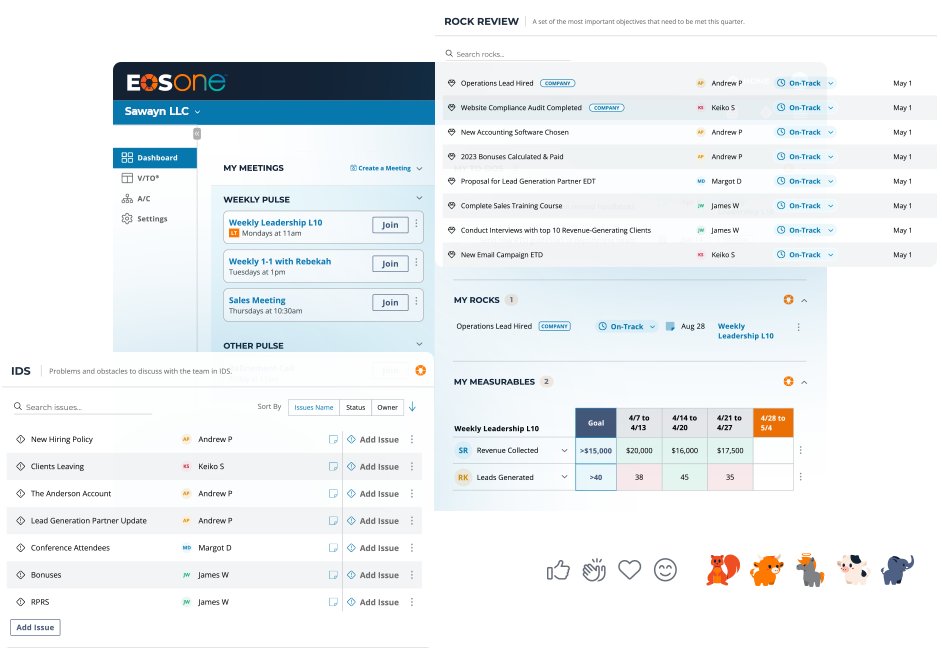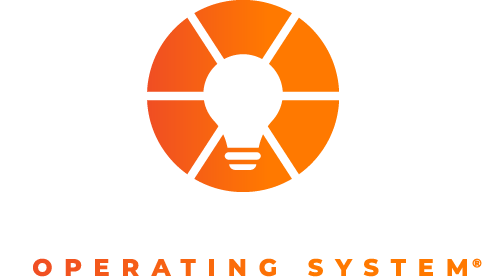
A lot of EOS® companies struggle at the start of their journey with their Scorecard by trying to monitor too much information instead of focusing only on a handful of measurables. As a result, they don’t love their scorecard and it doesn’t work well for them. If that is the case for you and your Scorecard, here are 5 steps you can take to troubleshoot your Scorecard issues and make it work better for you.
5-Steps for Troubleshooting Your Scorecard
1. Get in the proper frame of mind, or you’ll overcomplicate it.
- It is tempting to go too deep in a Scorecard. Don’t overthink it!
- Just think about your car. It is a complicated machine with thousands of parts, but there’s only a handful of gauges on your dashboard because there are only a few key things you need to monitor to keep it running.
- Do we have fuel? How fast are we traveling? How’s the engine’s performance? Oil OK? Water temp OK? How far have we traveled?
- Scorecards are the same way. Ultimately, you want to look at leading indicators and know:
- Did we get enough revenue from our present customers last week?
- Did we get it at prices/margins that allow us to be profitable?
- Did we get new customers/do the things that will bring us new customers?
- Did we make our customers happy by delivering on time?
- Did we do that work efficiently enough, with acceptable quality or few errors?
- Do we have enough financial resources?
- Did our departments that serve other departments in the business doing what they need to be doing?
- This is the frame of mind you want to be in when thinking about your Scorecard or you’ll make this much harder than it has to be.
2. Begin with your Leadership Team and your Vision/Traction Organizer™.
- First, design your Leadership Team Scorecard and the key measurables aligned with the goals recorded on your company’s V/TO™. Since each member of the Leadership Team is responsible for some key part of the company, it is a best practice for every department in the company to have a number on the Scorecard that relates to achieving the Vision on your V/TO.
3. Start Identifying Measurables by Asking Each Team Member: “How do you know you had a good week last week?”
- Measurables are the activities or results that we must achieve on a weekly basis in order to have successful weeks, and thus successful months, quarters, and years.
- From a numbers standpoint, did we achieve the goals for the week? For example, did we produce X units? Make X calls? Get out X reports? Meet X people/customers? Keep errors below X? Have X Sales? Did the organization have X or fewer compliance issues? Have X in the bank? No more than X in Accounts Receivable over 60 days?
- These are the measurables you should plug into your Scorecard.
4. Include Measurables Related to your Core Processes.
- Recall that every business has a handful of Core Processes. These are the areas common to all businesses:
- Hiring / Human Resources
- Marketing
- Sales
- Operations (usually several)
- Customer Satisfaction/Retention
- Accounting
- In your company, these processes are the key to your way of doing business, and some of your measurables should reflect whether they were working last week (or not). These can be quantified into numbers, as noted in Step 3.
5. Repeat Steps 1-4 to Create Scorecards for Each Department.
- Each leader’s key numbers on the Leadership Team Scorecard will be the top measurables on his/her departmental Scorecard. Simply break down what drives the numbers on the Leadership Team Scorecard to fill out the departmental Scorecard. Just as every member of the Leadership Team has a number, every employee in every department should have personal measurables that contribute to achieving the department’s measurables.
EOS ONE™
ONE VISION. ONE SYSTEM. ONE TEAM.™
Get everything you need to run your business better and faster on EOS® with the all-in-one software for communicating your vision, driving Traction®, and accelerating team health.
Exclusively from the makers of EOS.




